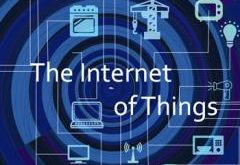The idea of household devices talking to one another has been prevalent in science fiction for decades. Now, industry experts believe we’re not far away from it becoming commonplace.
Despite fears of internet-connected fridges going rogue, or household item becoming self-aware and getting all 2001: A Space Odyssey on their owners, a truly connected smart home is not too far away now, and will, thankfully, be much less scary than works of fiction have made it out to be.
Last year we saw the first ever Smart Home Summit in London, where we reported on the latest innovations in the connect home arena, including Philips’ Hue wireless lights and switches, Sentec’s Raspberry Pi home controller, and D-Link’s range of smart CCTV cameras and home sensors.
We also heard about big names like John Lewis investing in IoT start ups. You can read more about that, as well as all the other interesting things we checked out at the 2015 Smart Home Summit, here.
While that was all very exciting back in October 2015, how far away are we from actually putting these products in people’s homes and having them talk to each other?
In the lead up to this year’s Mobile World Congress, which will have a brand new IoT Pavilion, analyst Gartner has revealed that we’re not far away at all.
“Today, users have various ecosystems in their homes that do not integrate with one another; for example, one for fitness and health and one for connected-home services. However, we expect that "things" will increasingly be connected to each other via a hub – either at home or in the cloud – that will aggregate, analyse, predict and even act up a user’s behalf,” commented Jessica Ekholm, research director at Gartner.
“By 2018, we expect that in mature markets, 40 devices and things per household will talk to one another, creating new digital experiences. Nevertheless, don’t expect consumers to rush out to shops and get these connected home solutions. We are likely to see slow growth with early adopters leading the way toward connected-home solutions.”
Ekholm said the shift to the connected home is being pushed along by the rapid rise of the use of apps: "Consumers are looking for new experiences and expect to use myriad devices, wearables and apps and, in the midterm, connected-home solutions that connect and seamlessly talk to one another.
“Users are at the heart of the shift toward a focus on customer experience, which is becoming the new battleground for providers of devices and services,” she added.
So what does all this mean for retailers? If Ekholm’s stats about the sector are anything to go by, there’s going to be plenty of opportunities for selling to consumers and businesses.
“We estimate that total IoT services spending will reach nearly $235 billion in 2016, an increase of 23 per cent from 2015. The professional services segment constitutes the biggest opportunity for IoT, with spending forecast to surpass $215 billion in 2016 an increase of 21 per cent in 2016,” she said.
“The largest consumer IoT services opportunity will be in health and fitness, followed by automotive infotainment, and home security and safety. In 2016, 3.5 million consumer connected things will be in use, representing 87 per cent of total consumer IoT in use, and on pace to reach 10.6 million units by 2020.”
Smart Home image via Shutterstock
 PCR Tech and IT retail, distribution and vendor news
PCR Tech and IT retail, distribution and vendor news




